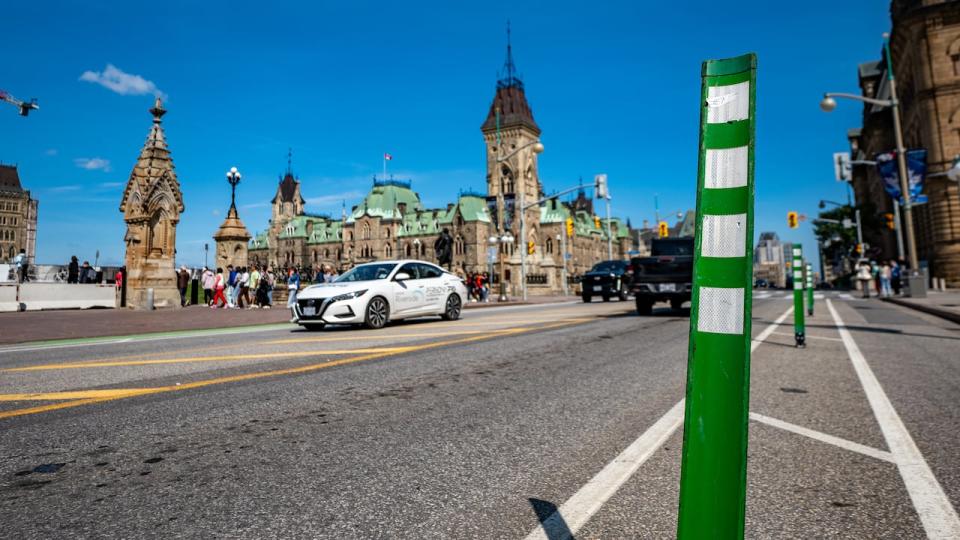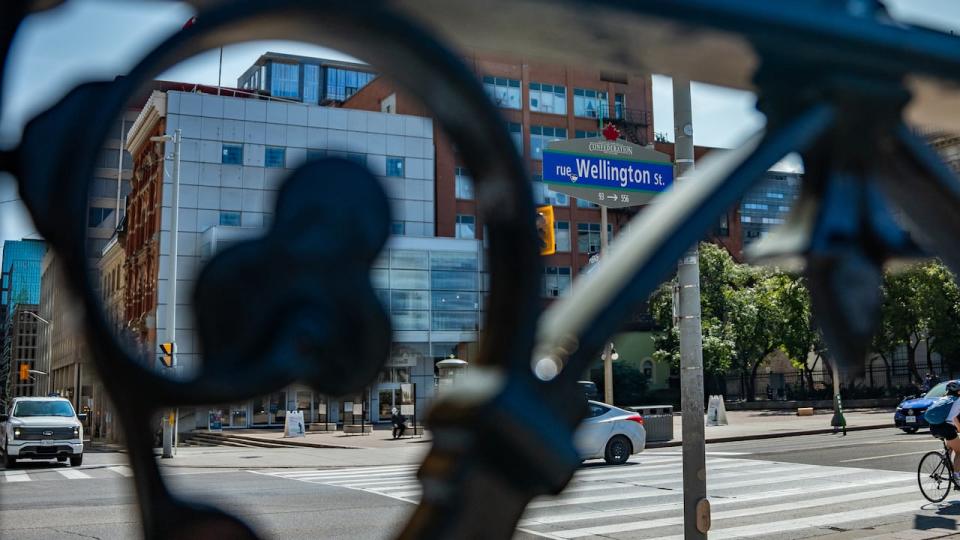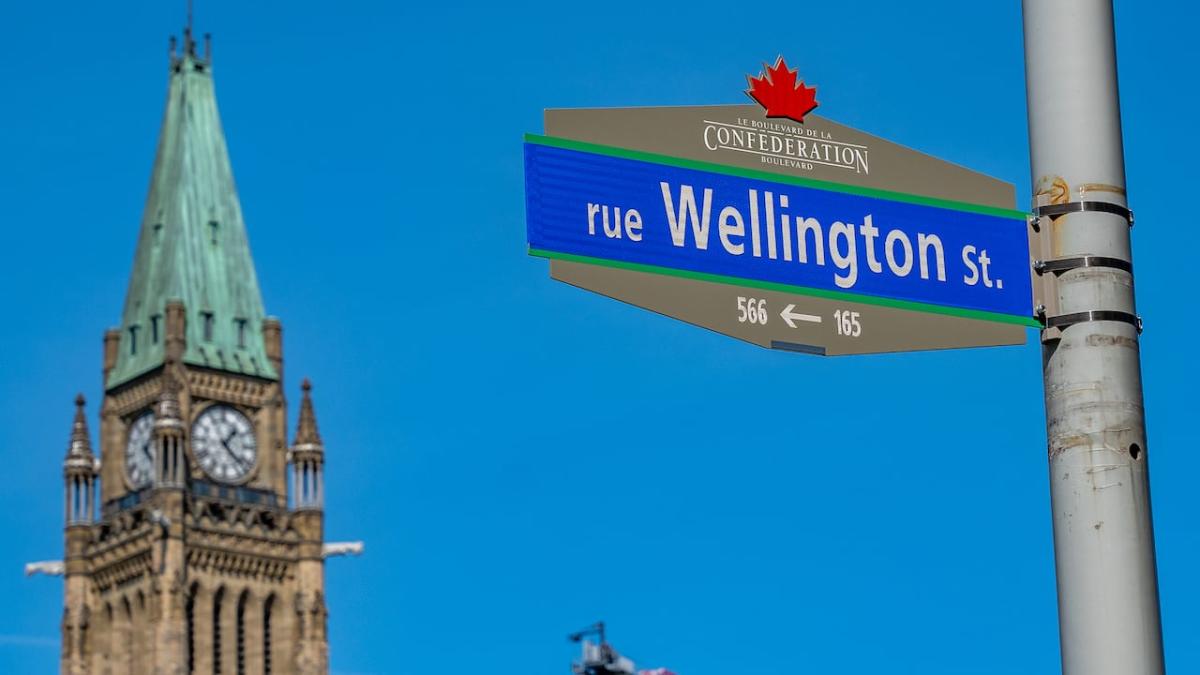The federal government is accusing the City of Ottawa of dragging its feet in negotiations to transfer ownership of the stretch of Wellington Street in front of Parliament Hill.
The office of Jean-Yves Duclos, minister of Public Services and Procurement Canada (PSPC), said discussions between the two sides have broken down.
“At a time when the City of Ottawa is looking for revenue, it would be up to them to answer why they refuse to continue discussions on the sale of Wellington Street to the federal government,” said the minister’s spokesperson, Guillaume Bertrand.
“We hope the municipal administration will continue to work with us to provide the people of Ottawa and Canadians with a parliamentary precinct they can be proud of.”
In April 2023, the federal government asked the city for a care and control agreement that would allow it to keep the road closed, a proposal Mayor Mark Sutcliffe rejected. He called it “premature,” citing the need for a traffic study and an internal review of the implications of transferring Wellington Street.
At the same time, he said he was “open to an ongoing conversation” so long as it was “the right deal for the people of Ottawa.”
The stretch in front of Parliament Hill was closed to automobile traffic for almost a year following the convoy protest that invaded downtown in 2022.
PSPC spokesperson Michèle LaRose said the protests “highlighted longstanding security and operational issues with Wellington Street.”
Wellington at centre of plans for parliamentary campus
The federal government is aiming to create an integrated parliamentary campus, and LaRose said those plans have made the issues with Wellington Street increasingly relevant.
Once work is complete, more than half of parliamentary offices will be located on the south side of the street. The government is also planning to construct an interconnected system of tunnels that will link those buildings to Parliament.
“This is a key feature of an integrated parliamentary campus by facilitating the safe movement of goods and accredited personnel between facilities,” LaRose said.
The campus plan is laid out in a document called the Long Term Vision and Plan (LTVP) for the site.

Ottawa city council voted to reopen Wellington Street to automobile traffic last year. (Mathieu Thériault/Radio-Canada)
Radio-Canada obtained a 2023 update to the plan through an access to information request. It warns that delays in determining the future of Wellington Street could affect timelines for “projects critical to establishing an integrated campus.”
“Achieving clarity on the future of Wellington Street in the early Fall timeline will mitigate impacts on the planned timeline for the LTVP update,” it said, referring to the fall of 2023.
Yet more than a year after the update, the ministry now states that it isn’t expecting any impact on the modernization of the parliamentary precinct if the negotiations with the city don’t conclude quickly.
2 sides at odds over formal offer
For its part, the city says it’s continuing discussions on the future of Wellington Street but hasn’t yet received a formal offer from the federal government.
“There is still a lot of work to do before a recommendation can be brought to City Council regarding the change in function or ownership of Wellington Street and the potential impact of the establishment of a yet to be defined Parliamentary Precinct on the downtown core,” said a statement from Vivi Chi, interim general manager of the city’s planning, development and building services department.
“While potential costs and high-level parameters have been discussed in broad terms, no formal offer on the transfer of Wellington Street has been received,” she said. “This will be a negotiated process.”
Chi said the city is examining the potential consequences for underground infrastructure and access to services, as well as other considerations.
A traffic study commissioned by both sides and released in February found that closing Wellington Street could have “notable impacts” by dumping traffic onto alternatives like Albert and Slater streets. It could cost up to $26 million to update infrastructure to mitigate the impact, according to the study.


Public Services and Procurement Canada says about half of parliamentary offices will be located on the south side of Wellington Street within the next 10 years. (Mathieu Thériault/Radio-Canada)
The federal government said it has made an offer as part of a framework developed by both sides last year. According to LaRose, it has received neither a refusal nor a counter-offer from the city.
“The framework outlines a proposal for a transfer, and includes an offer aligned with PSPC’s commitment to ensure that the City is fairly compensated for the transfer of Wellington Street,” she said. “The offer is based on an independently appraised value for the street and the costs of mitigating potential impacts of restricting vehicle traffic on Wellington.”
Bertrand said he was surprised by the city’s claim that it hasn’t received a formal offer.
“Considering the offer has evolved multiples times to meet the changing demands of the city, I found that surprising,” he said. “We will be happy to send the offer again in whatever format they prefer.”
Traffic probably not a deal breaker, says expert
Guy Chiasson, a professor of social science at the Université du Québec en Outaouais, said the impasse is symptomatic of broader tensions and poor communication between the two levels of government.
Chiasson, who specializes in municipal politics, said Ottawa’s broader dispute with the federal government, including the mayor’s campaign for “fairness” over federal payments in lieu of taxes, could be playing a role.
“The federal government has a vested interest that this goes through,” said Chiasson. “But that probably involves treating the city as a real partner.”
He sees a gap between what Wellington Street means to the federal government — security for parliamentarians — and what it means for the city, which is responsible for broader questions of transportation and utilities.
Christina Bouchard, a part-time professor at the University of Ottawa, agrees.
“The two groups are behaving perfectly rationally according to their own institutional logics,” she said. “Each side has a mandate which they’re seeking to fulfil, but the mandates are different.”
She said municipalities generally aren’t in a strong negotiating position and have few revenue-raising tools, so they tend to be quite cautious about new expenses, like those for mitigating the traffic impacts of closing Wellington Street to cars.
Bouchard, who is a former transportation planner with the City of Toronto, said the need to keep traffic flowing is deeply rooted in city halls, though several municipalities have succeeded in creating vibrant and interesting spaces reserves for pedestrians and cyclists.
But based on the traffic study released in February, she doesn’t see traffic as presenting an insurmountable obstacle to reaching a deal.
“We might need to change three intersections. In a more high volume scenario … we might need to change nine intersections,” she said. “I really personally don’t see those as deal breakers. I see this as a conversation that should happen.”

